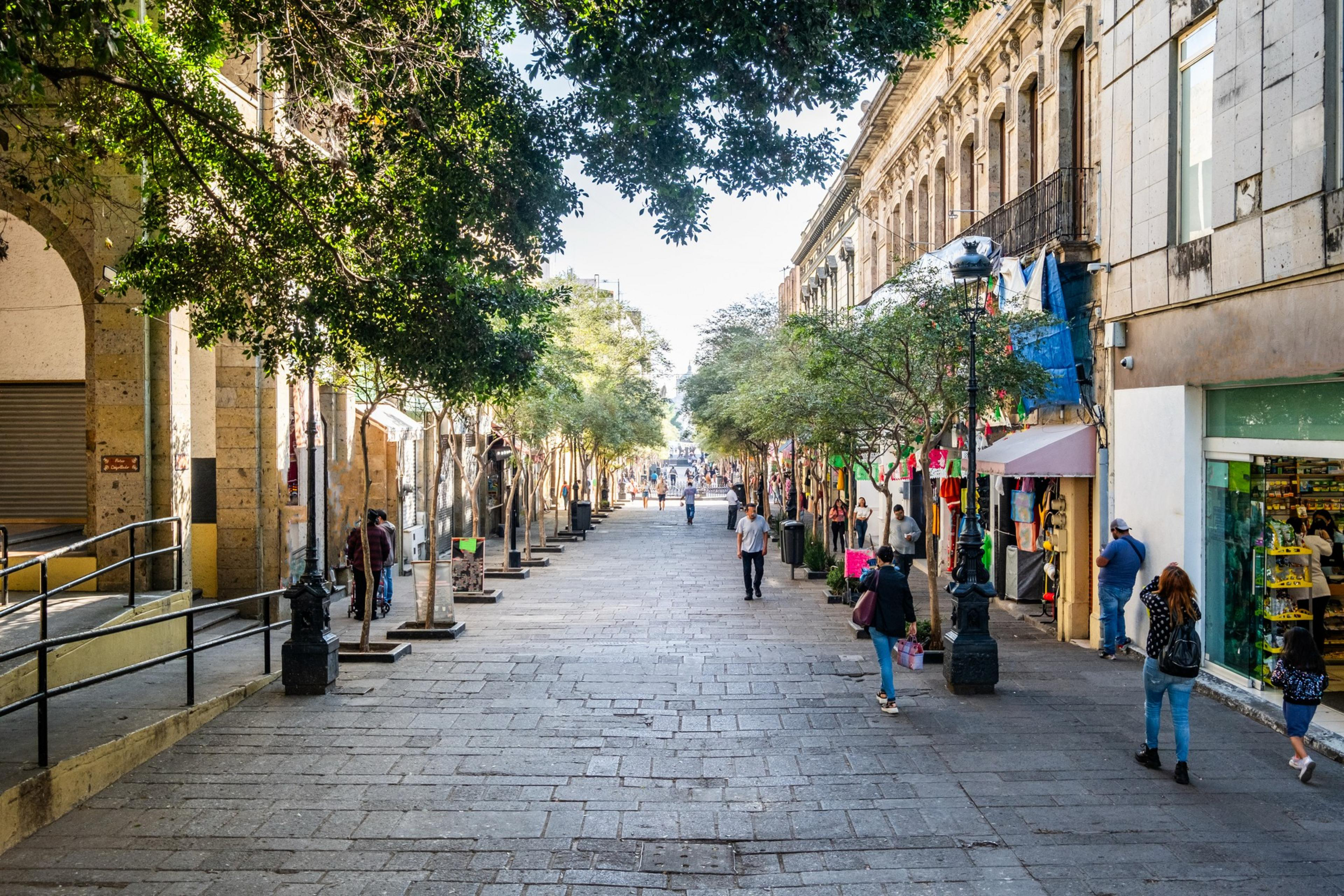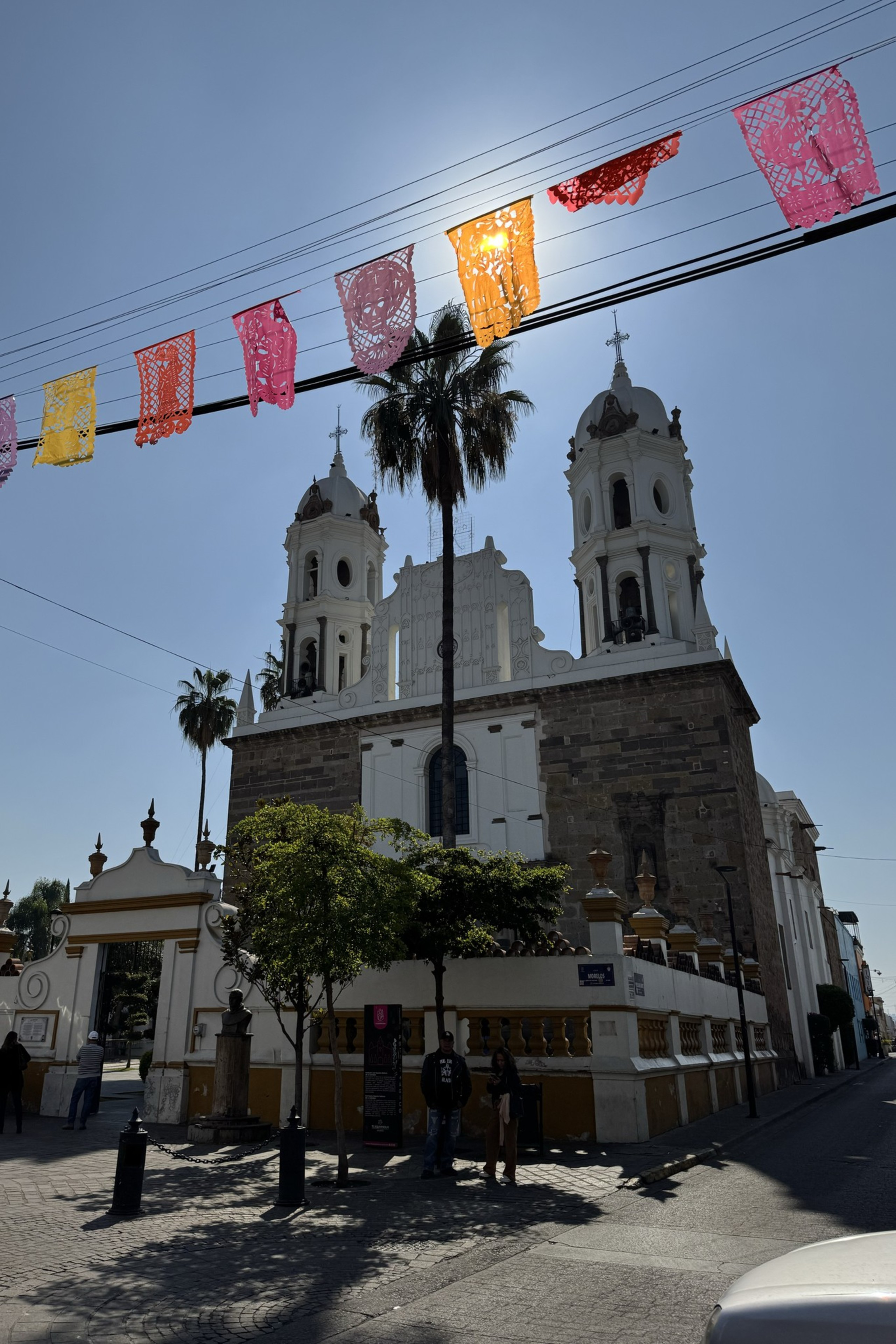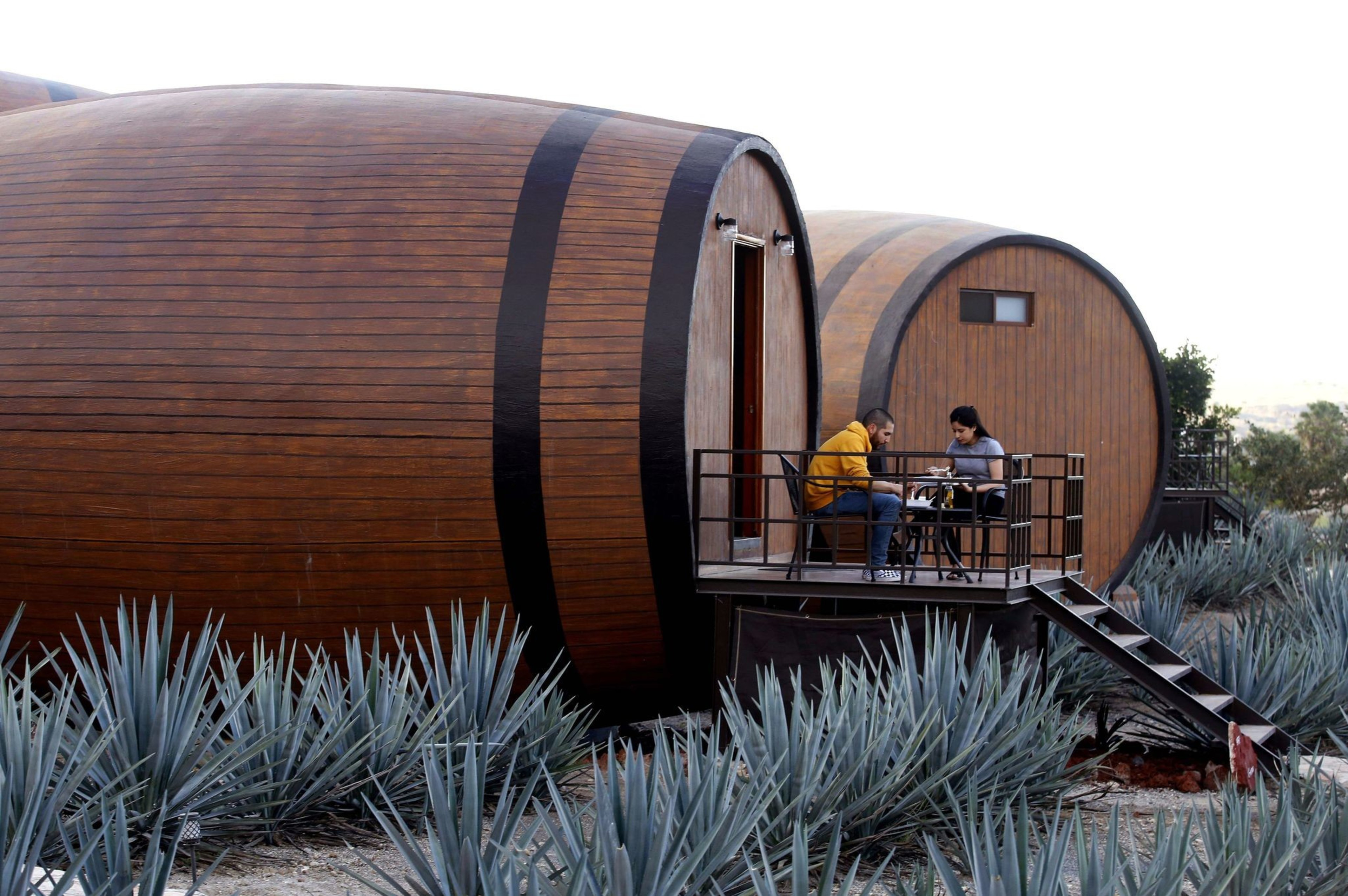From the Bay Area, Guadalajara is so easy and affordable that arriving there feels like getting away with something. In less than four hours on a nonstop, $250 round-trip flight, you can find yourself lounging in bougainvillea-walled courtyards accented by the pink and orange designs of Luis Barragán, Mexico’s most celebrated architect, eating ceviche so fresh you’ll forget all about your regular life.
Guadalajara, with just over 5 million people, is enigmatic. The arts and culture scene is more subterranean than the jet-setter trendiness of Mexico City or Oaxaca. It’s a sprawling metropolis of murals and markets, live music and contemporary crafts that remains unaffected and underrated. To spend a few days there is to wonder how the city isn’t overrun with San Franciscans fleeing our dreary weather and national malaise.
While there, be sure to venture into the surrounding countryside and pueblos. Within an hour of the city, you can visit the silver-green agave hillside valley where tequila was born; dip south to the banks of Lake Chapala to soak in thermal waters in the shadow of a volcanic caldera; and wander from storefront to studio to museum in Tlaquepaque, appreciating the stunning craftsmanship of the region’s celebrated artesanía.
Guadalajara: Food worth a flight
Even by Mexican standards, Guadalajara is an exceptional food town. From sidewalk cafes and street stalls to multi-hour tasting menus, there’s an implausible quality to the city’s culinary landscape — it’s impossible to go wrong.
Founded in 1542, Guadalajara has its share of history-soaked traditional cantinas — those discrete, unpretentious places where men gather for a long drink accompanied by botanas (small plates and drinking snacks). Among these institutions is La Fuente (opens in new tab), where tourists share counter space with old-timers behind a swinging, Old West-style bar door, and La Iberia (opens in new tab), Guadalajara’s oldest cantina, which has a mythology dating to Pancho Villa. (opens in new tab)

That history is juxtaposed with a thrilling new-school cantina culture at places like Cantina De La O (opens in new tab) and Farmacia Rita Perez (opens in new tab), where there’s both a reverence for the region’s past and an eagerness to riff on tradition. That means marrying Mexico’s agave spirits with tiki-inspired flavor combinations, serving a craft cocktail take on the classic Jaliscan vampiro (opens in new tab), or injecting high-end Oaxacan mezcal into a classic michelada. These next-generation hangouts suggest the spirit of the cantina while serving food that’s deeply considered, eclectic music (think psychedelic cumbia, Mexican punk rock or midcentury U.S. oldies), and a nostalgic aesthetic.
Wherever you go in this food-obsessed city, you’ll find some version of Guadalajara’s characteristic meal, the carnitas-stuffed, sauce-drenched torta ahogada (drowned sandwich). And nearly every Tapatío has their favorite rendition. One could be tasked with a worse job than fact-checking this list (opens in new tab) of the city’s best.
At the other end of the culinary spectrum is the reservation-only haute Mexican restaurant Xokol (opens in new tab), praised as “the next Pujol.” Sitting alongside a long open kitchen producing hand-pressed tortillas of deeply fragrant masa (imprinted — literally, not mystically — with the image of the Virgen de Guadalupe), the experience at Xokol evolved from one dish to the next. There was a single oyster on a bed of charcoal in a lava-rock molcajete; a deeply unappetizing skewer of cubed, gelatinized bean purees in various shades of brown; and a vibrant, vegetal aguachile (a Sinaloan-style, chili-laden, ceviche-adjacent preparation). At $80 for a four-hour, 12-course tasting menu, it’s a marathon of a meal, with highs and lows, that feels like a steal by San Francisco standards.
Because Guadalajara is a big, dynamic city — Mexico’s third-largest — its food culture extends beyond the rightfully revered dishes of Jalisco, its state. There’s also flavorful Neopolitan-style pizza at Mammut Pizza Terán (opens in new tab); expertly cooked Argentinian meats at Res Pública (opens in new tab); and coastal Mexican seafood, like the zarandeado-style grilled oysters on the rooftop at Malaya Barra y Mar (opens in new tab) or the passionfruit-spiked ceviche at Leche de Tigre (opens in new tab).

Tlaquepaque for shopping
On the outer edge of Guadalajara, easily accessible from the center by a 20-minute, $15 taxi ride, you’ll find Tlaquepaque’s narrow, one-way streets — lined with walled, colonial-style homes in lime green, purple, and salmon pink. While Guadalajara’s urban sprawl has consumed this pueblo, the spirit of the town remains in its folk art traditions and churches, where weddings, funerals, and quinceañera Masses are held one after the next, making the town’s crowded zócalo feel almost intimate.
The name Tlaquepaque is derived from Náhuatl and means “Land above knolls of clay.” It is known for its artesanía, or handicrafts, which are displayed in workshops, studios, and boutiques along Calle Peatonal Independencia, a pedestrian avenue lined with sculptures and strung with the festive, multicolored perforated paper flags called papel picado. There you will encounter elaborately chiseled and hand-tooled leatherwork at Alejandro Yeo Marroquinería (opens in new tab), and Puebla-style talavera tiles at Azulejos Talavera Cantú (opens in new tab).


But Tlaquepaque is best known for its pottery, made from the area’s distinctive barro de olor, or scented clay. Used since pre-Hispanic times to make Jalisco’s celebrated ceramics, the clay’s unusual mineral composition allows it to be burnished to almost marble-like smoothness. Tonalá pottery is so prized that it has found its way to museums worldwide, including the Met in New York (opens in new tab).
While in Tlaquepaque, visit the sensational, lesser-known pottery museum Pantaléon Panduro Museum of the National Ceramics Contest (opens in new tab), which may make you radically reevaluate your understanding of ceramics as an art form. Just down the street, Paco Padilla Workshop (opens in new tab) is a multigenerational family business creating hand-painted contemporary ceramics in rich colors and intriguing designs.
To stay, try the brilliant blue La Villa del Ensueño (opens in new tab), one of the few places in the area with a swimming pool, where a junior suite with a patio and hot tub has brick boveda ceilings and costs about $110 per night. For a boutique hotel, Casa Morales (opens in new tab) has seven beautiful and individually designed suites, starting at $176. Some have views of the town’s cathedral (opens in new tab), while others look out onto the courtyard garden.

Ajijic for thermal baths
Just over an hour south of Guadalajara, Ajijic (ah-hee-heek) is a village on the marshy banks of Lake Chapala. It has narrow, cobblestone streets descending to the water’s edge, where reeds grow along the shore, white pelicans skim the surface, and families stroll the malecón at sunset. It’s a beautiful place to breathe and think, which is likely how it became one of the oldest and most established expat communities in Mexico — some 30,000 Americans and Canadians call the area home.
At Lake Chapala, the volcanic caldera of Mount Garcia defines the skyline and there is no beach to speak of. Instead, there are hot springs. Head over to San Juan Cosalá (opens in new tab), the next town west of Ajijic along the lake, to visit the Balneario San Juan Cosalá (opens in new tab) hot spring complex that extends along the waterfront. One half offers thermal water-fed pools of various depths and sizes, modest water slides, barbecue grills on an immaculate grassy lawn, and a food court with a trio of stalls serving seafood, grilled chicken, and liter-sized fresh juice beverages. The other side is a separate, adults-only spa — for which you pay a modest additional admission.
Tequila for its namesake spirit — and breathtaking views
In the last couple of decades, Mexico’s prized national spirit, tequila, has been overtaken in prestige by its once lesser-known cousin, mezcal. Tequila didn’t go anywhere, of course. It’s by far the more widely consumed and better-known beverage — so popular that it’s now the No. 1 spirit in the United States (opens in new tab) by dollar value, having recently passed vodka and whiskey. But while mezcal has been getting all the glory, tequila’s artisanal moment quietly arrived.
The town of Tequila is home to the (disputed) oldest distillery in the Americas, Jose Cuervo’s La Rojeña, founded in 1795, around the same time as Kentucky’s Buffalo Trace.
In the UNESCO-protected (opens in new tab) tequila-producing countryside of Jalisco, just an hour outside Guadalajara, exceptional, small-production craft distilleries are producing tequila that’s unlike anything
most casual tequila drinkers have tasted. The town of Tequila itself is pleasant, but it’s really the agave farms and distilleries in the surrounding valley that are the draw. Among them is Tequila Cascahuín (opens in new tab), in nearby Arenal, which has been crafting tequila since 1904 and has recently become the darling of Guadalajara bartenders and other craft tequila enthusiasts.

The Tequila Express (opens in new tab) train, which includes onboard tastings, has recently begun transporting passengers from Guadalajara to Tequila again for the first time in nine years. The weekend-only train delivers riders to a station within walking distance of the city’s central plaza, where tequila cocktails are sold (for about $10) in clay mugs that visitors can refill through their stay and keep as souvenirs when they leave.
In addition to the big distilleries in downtown Tequila — Casa Sauza, Jose Cuervo, Centenario and Herradura among them — there are smaller ones offering a more intimate and atmospheric tasting room experience. Reservations for the subterranean tasting room at Fortaleza (opens in new tab), for example, need to be made at least 10 days in advance and cost $25 to $35 per person. The tour includes a tasting of Fortaleza’s high-end, hard-to-find tequilas in a candlelit fortress cave.
While in the town of Tequila, don’t miss the Centro Cultural Juan Beckmann Gallardo Tequila (opens in new tab). Created in 2018 by the family behind José Cuervo, this exceptional museum is dedicated to the history and culture of the region, with exhibitions of both folk and contemporary art and historical artifacts.
While there are a few decent hotels in Tequila, including the new tequila-centric Matices, Hotel de Barricas (opens in new tab), which has cabin-like rooms built into massive tequila barrels on the outskirts of town, the valley is also home to historic haciendas, like Hacienda El Carmen (opens in new tab), Hacienda Labor de Rivera (opens in new tab) or Hacienda San Nicolas de las Fuentes (opens in new tab).
